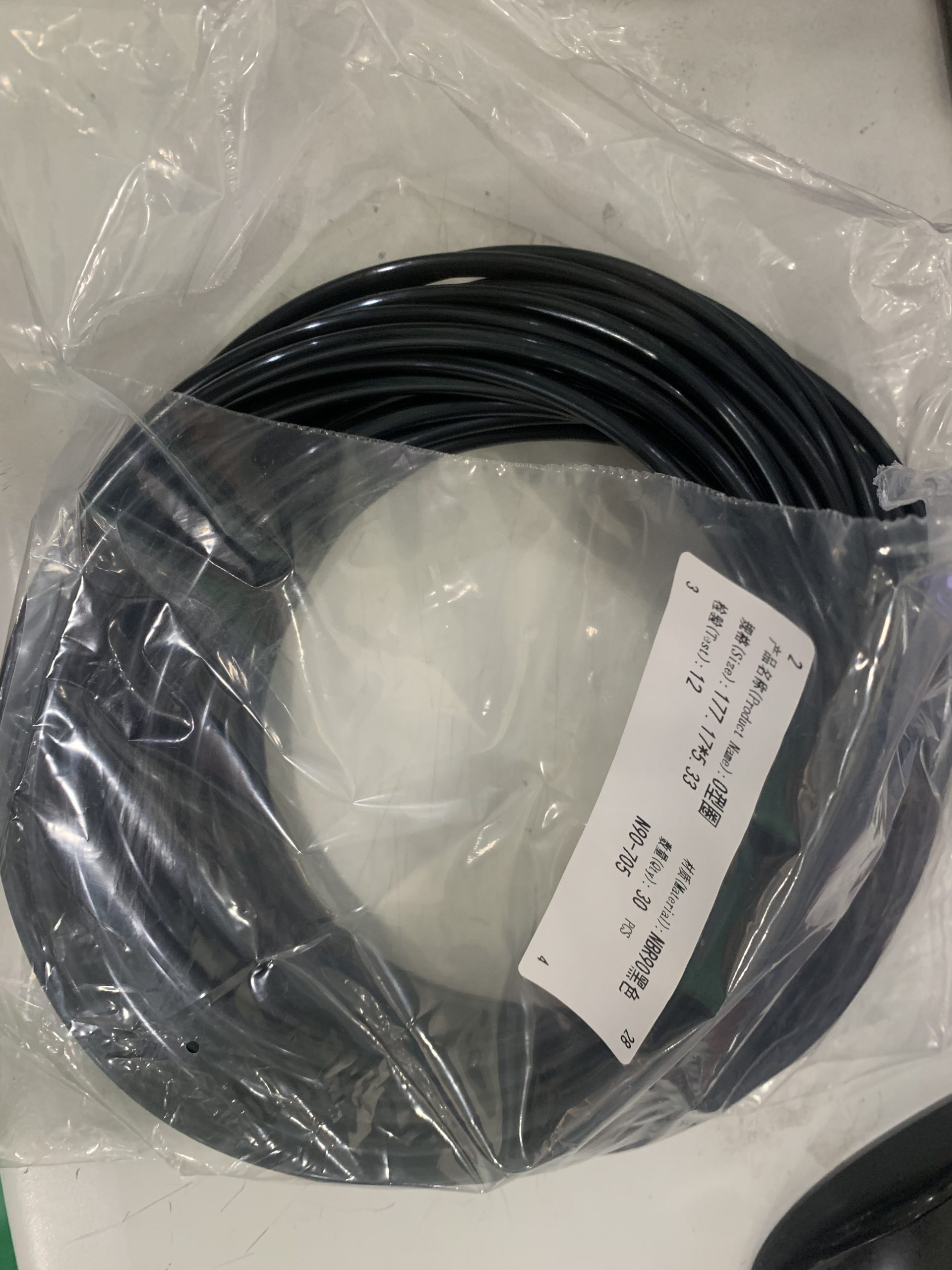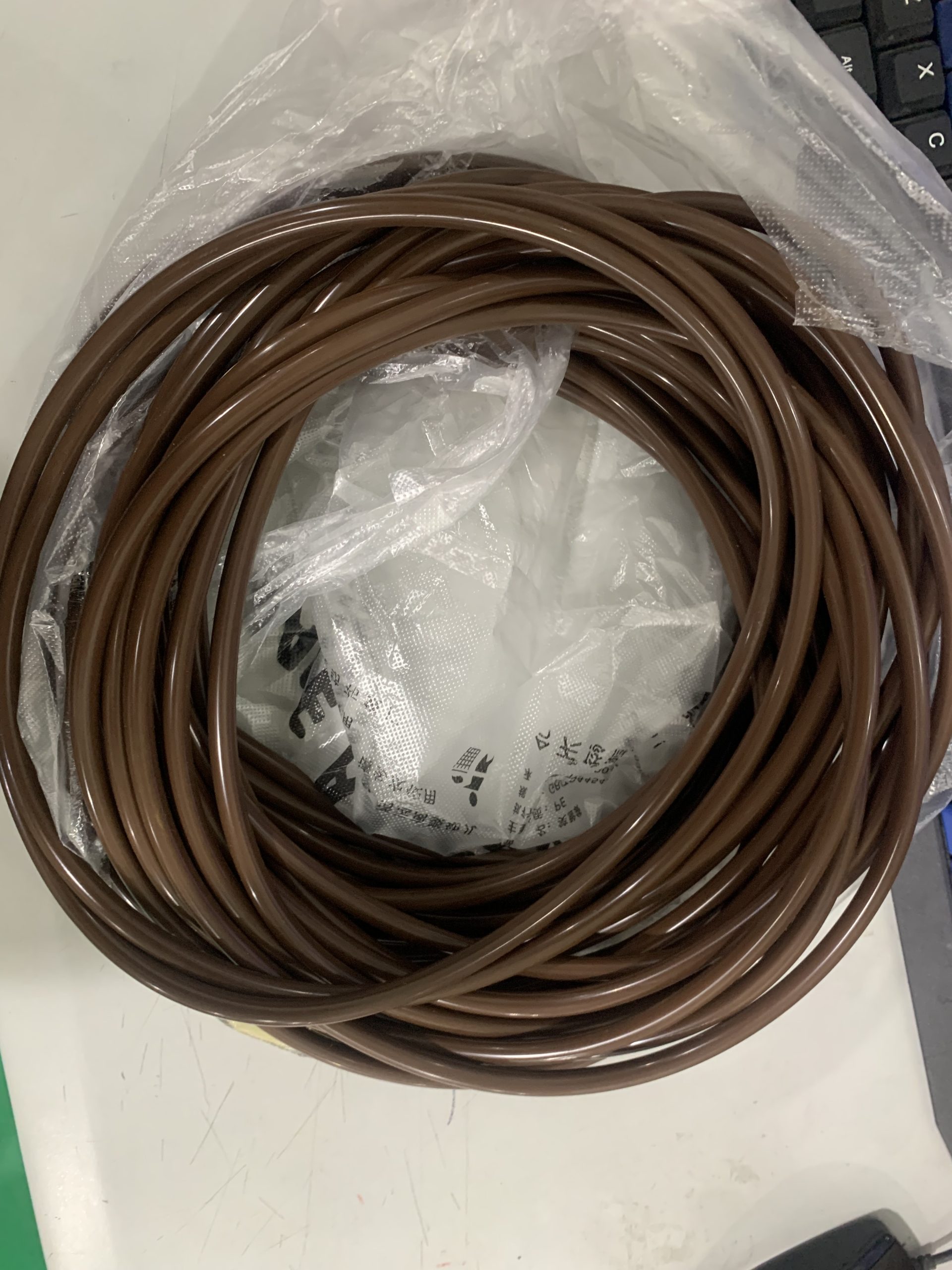Nitrile rubber and FKM are both very commonly used sealing materials, as elastomers they have their own unique properties and applications. In this article, we will introduce the difference between NBR O-Ring and FKM O-Ring in detail to help you better understand the performance and application scenarios of both and make the right choice.
Nitrile rubber(NBR)
NBR is a synthetic rubber made from the copolymerisation of butadiene and acrylonitrile. Its molecular structure contains many cyano groups, so it has good resistance to oil, abrasion and flammable oils, and chemical corrosion. It is widely used in some common industrial applications. Below are some of the main features and application scenarios of NBR:
Oil Resistance: NBR has excellent oil resistance and is suitable for many lubricant and fuel sealing applications such as engines, hydraulic systems, etc.
Abrasion Resistance: NBR has good abrasion resistance and can maintain sealing performance in some highly abrasive environments.
Low-temperature performance: NBR has good low-temperature elasticity, can be maintained within a specific range of elasticity, and is suitable for low-temperature environments.
Application Scenario: NBR is commonly used in some general sealing applications, such as automotive engines, hydraulic systems, mechanical seals, and so on.
How much heat is NBR resistant?
NBR heat-resistant mainly depends on the acrylonitrile content is how much; according to different formulations of the content of difference, the higher the temperature resistance is better, but the oil resistance performance will be worse; the general temperature resistance seen on the market will not be more than 120 degrees Celsius, basically in the 100 degrees Celsius, the acrylonitrile content of 30% of the resistance to temperature of 130 degrees Celsius or so. There are also changes in high-temperature filler temperature resistance, which will be increased accordingly.
As many know, the NBR seal’s oil, wear, and heat resistance are excellent. Still, many people do not understand that some NBR media are not applicable. For example, NBR seals do not apply to phosphate ester series of hydraulic oils and gear oils containing extreme pressure additives, so the choice is not only to look at the temperature resistance and size of the Nitrile seals and so on, but also to take into account the need to meet the performance requirements.
Fluoroelastomer(FKM or FPM)
FKM is a high-performance synthetic rubber copolymerised with fluorine-containing monomers. Due to the strong electronegativity of the fluorine atom, FKM has excellent resistance to high temperatures and excellent chemical and oil resistance. It is widely used in applications requiring higher temperatures and harsher chemical environments.FKM is hard (customised Shore 40-90), high-strength (high fluorine is available), unbreakable, not easy to age, and has good performance. Below are some of the main features and application scenarios of FKM:
Chemical resistance: FKM has excellent chemical resistance and can resist various corrosive liquids and gases. It is suitable for chemical, medical equipment, and other fields.
High-temperature performance: FKM can maintain its elasticity and sealing performance in high-temperature environments, which is suitable for high-temperature engines, stoves, and other applications.
Weathering resistance: FKM has good weathering resistance and can maintain its performance in outdoor and harsh environments.
Application Scenario: FKM is commonly used in high temperatures, chemical corrosion, and other requirements of more demanding sealing applications, such as aerospace, petrochemical, and other fields.


NBR O-rings VS FKM O-rings
Oil resistance:
NBR O-Ring performs well in regular oils.
FKM O-Ring performs better in more severe oils and chemicals.
Fluorocarbon rubber performs better in resisting certain organic solvents.
Temperature resistance: FKM O-rings have higher temperature resistance and can maintain their stable physical properties in a broader range of high temperatures; cold resistance is worse than nitrile, the general use of temperature scale of -20 ~ 250 ℃, specially customised fluoroelastomer materials can be resistant to low temperatures up to -40 ℃; and nitrile rubber’s resistance to high temperatures is relatively poor, generally applicable to the temperature range of -30 ℃ ~ 100 ℃.
Chemical resistance: FKM O-Ring performs better in chemical resistance and can resist more kinds of chemical mediums such as various acids, alkalis, salts and other chemicals; while NBR has relatively better chemical resistance, but has poorer resistance to certain solvents (e.g. ketones).
Elasticity and abrasion resistance: FKM O-rings have better elasticity and abrasion resistance and can maintain a good sealing effect under extreme environments such as high pressure and high speed; NBR O-rings also have better abrasion resistance and elasticity but may be slightly inferior to fluoroelastomers under extreme environments.
Biocompatibility: Fluoroelastomer has good performance in biocompatibility and can be used in medical equipment and other areas involving human contact. In contrast, the biocompatibility of nitrile rubber is relatively poor and unsuitable for direct contact with the human body.
Processing performance: Both NBR and Viton have good processing performance and can be processed by injection moulding, calendering, extrusion and other processes. However, fluorine rubber has higher temperature and pressure requirements during processing and is more challenging to process.
Price: FKM generally costs more than NBR, mainly due to its higher production costs and strict technical requirements. However, in high-performance applications, the cost difference can be offset by its performance advantages.
Summary
When choosing between NBR O-Ring or FKM O-Ring, both NBR and FKM are excellent performance sealing materials, which show their respective advantages in different applications, usage conditions and usage requirements and should be judged according to the specific application environment and requirements. If the application involves high temperature, chemical corrosion and other harsh conditions, FKM may be more suitable. For general industrial applications, NBR may be the more economical choice. Considering the material’s performance, cost, and application requirements, choosing the suitable O-ring material is critical to ensuring sealing effectiveness, helping to make the right choice to ensure the proper operation, safety and reliability of the equipment. With the continuous development of technology, more new types of sealing materials may appear to meet more stringent sealing requirements.
TYS Hydraulic Seals specialises in the development and production of seals made from these two materials; if you require more seals made from FKM or NBR, you can contact the TYS team for a competitive quote.
